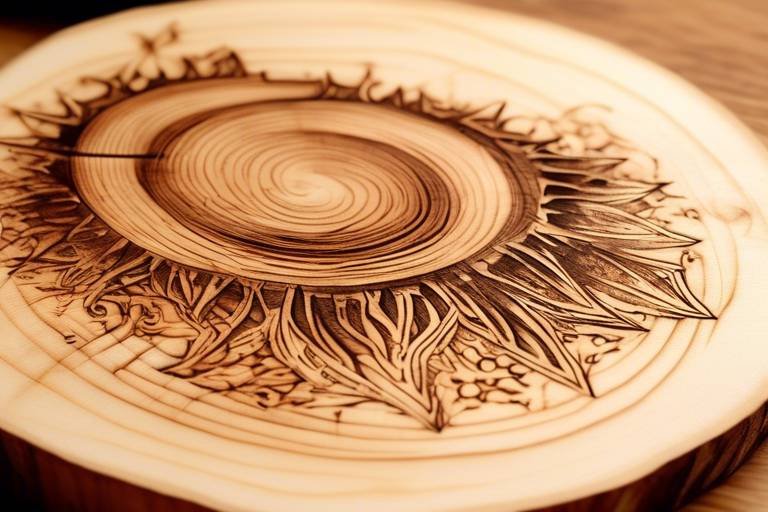Wooden Chess Pieces: A Guide for Carving Enthusiasts
Welcome to the fascinating world of wooden chess pieces! If you’ve ever gazed at a beautifully carved chess set and thought, “I wish I could make that,” you’re in the right place. This article explores the art of carving wooden chess pieces, offering insights into techniques, materials, and tips for both beginners and experienced artisans looking to enhance their skills. Carving chess pieces is not just a hobby; it's a journey into creativity and craftsmanship that can bring joy and satisfaction. Whether you’re aiming for a classic look or a modern twist, the possibilities are endless!
When it comes to carving chess pieces, selecting the appropriate type of wood is crucial. Different woods offer unique aesthetics, durability, and carving ease, which significantly impact the final product's quality and appearance. For instance, hardwoods like maple and walnut are popular choices due to their density and fine grain, making them ideal for intricate designs. On the other hand, softer woods like pine may be easier to carve but can lack the durability and elegance of hardwoods. It's essential to consider the following factors when choosing your wood:
- Aesthetic Appeal: The natural color and grain of the wood can enhance the beauty of your chess pieces.
- Durability: Hardwoods tend to last longer and withstand wear and tear better than softwoods.
- Carving Ease: Softer woods can be more forgiving for beginners, while harder woods require more skill and patience.
Having the right tools can significantly affect your carving experience. Investing in quality tools will not only make the process easier but also enhance the precision of your work. Here’s a rundown of essential tools you’ll need for carving wooden chess pieces:
Understanding the various types of knives and gouges is vital for precision in carving. Each tool serves a unique purpose, and knowing how to use them effectively can elevate your artistry. For example, a whittling knife is perfect for detailed work, while gouges are excellent for removing larger sections of wood. Here are some common tools you might consider:
- Carving Knives: Ideal for detailed cuts and fine lines.
- Gouges: Great for creating curves and hollow areas.
- V-tools: Perfect for adding intricate designs and details.
Proper sharpening techniques are essential for maintaining your tools. A sharp tool not only makes clean cuts but also reduces the risk of accidents. Regularly honing your knives and gouges will keep them in top shape. Here’s a simple sharpening routine:
- Use a sharpening stone or strop to maintain the edge.
- Angle your tool correctly to achieve the best results.
- Test the sharpness on a piece of scrap wood.
Regular maintenance of your carving tools extends their lifespan. Keeping your tools clean and rust-free will ensure they perform at their best. Here are some best practices to follow:
- Wipe down tools after each use to remove moisture.
- Store tools in a dry place, preferably in a protective case.
- Apply a light coat of oil to metal parts to prevent rust.
Mastering various carving techniques is key to creating beautiful chess pieces. From basic shapes to intricate designs, the techniques you choose can greatly influence the final look of your pieces. Start with simple shapes and gradually move to more complex designs as you gain confidence. Experimenting with different methods can also spark your creativity and lead to unique outcomes!
Finding inspiration for your chess piece designs can be challenging. Sometimes, all it takes is a little exploration to ignite your creativity. Look around you—nature, architecture, and even historical art can provide a wealth of ideas. Consider visiting museums or browsing online galleries to see what others have created. Here are a few sources of inspiration:
- Historical Designs: Exploring classic styles can give you a solid foundation for your own unique creations.
- Modern Interpretations: Contemporary designs can provide fresh perspectives and appeal to a broader audience.
Applying the right finishes enhances the beauty and durability of your carved chess pieces. The finish you choose can dramatically change the appearance of your work, so take your time to select the best one. Techniques like sanding, staining, and sealing can help you achieve that professional look you desire. Remember, the finishing touches are what make your pieces stand out!
Deciding between paint and natural finishes can impact the final appearance of your chess pieces. Each method has its pros and cons, and your choice should align with your artistic vision. For instance, paint can provide vibrant colors and designs, while natural finishes can enhance the wood's natural beauty. Consider experimenting with both to see which one resonates with your style.
Protecting your finished chess pieces is essential for longevity. Using protective coatings and proper storage solutions will keep your carvings in pristine condition for years to come. Look for non-toxic sealants that won’t alter the appearance of your wood, and always store your chess set in a cool, dry place to prevent warping or damage.
Q: What type of wood is best for beginners?
A: Softwoods like pine are great for beginners due to their ease of carving. However, hardwoods like basswood are also popular as they offer a good balance of durability and workability.
Q: How long does it take to carve a chess piece?
A: The time it takes can vary widely based on the complexity of the design and your skill level. Simple pieces might take a few hours, while intricate designs could take several days.
Q: Can I use power tools for carving?
A: Yes, power tools can speed up the process, but they require a different set of skills. Hand tools allow for more control and detail, which is often preferred in traditional carving.
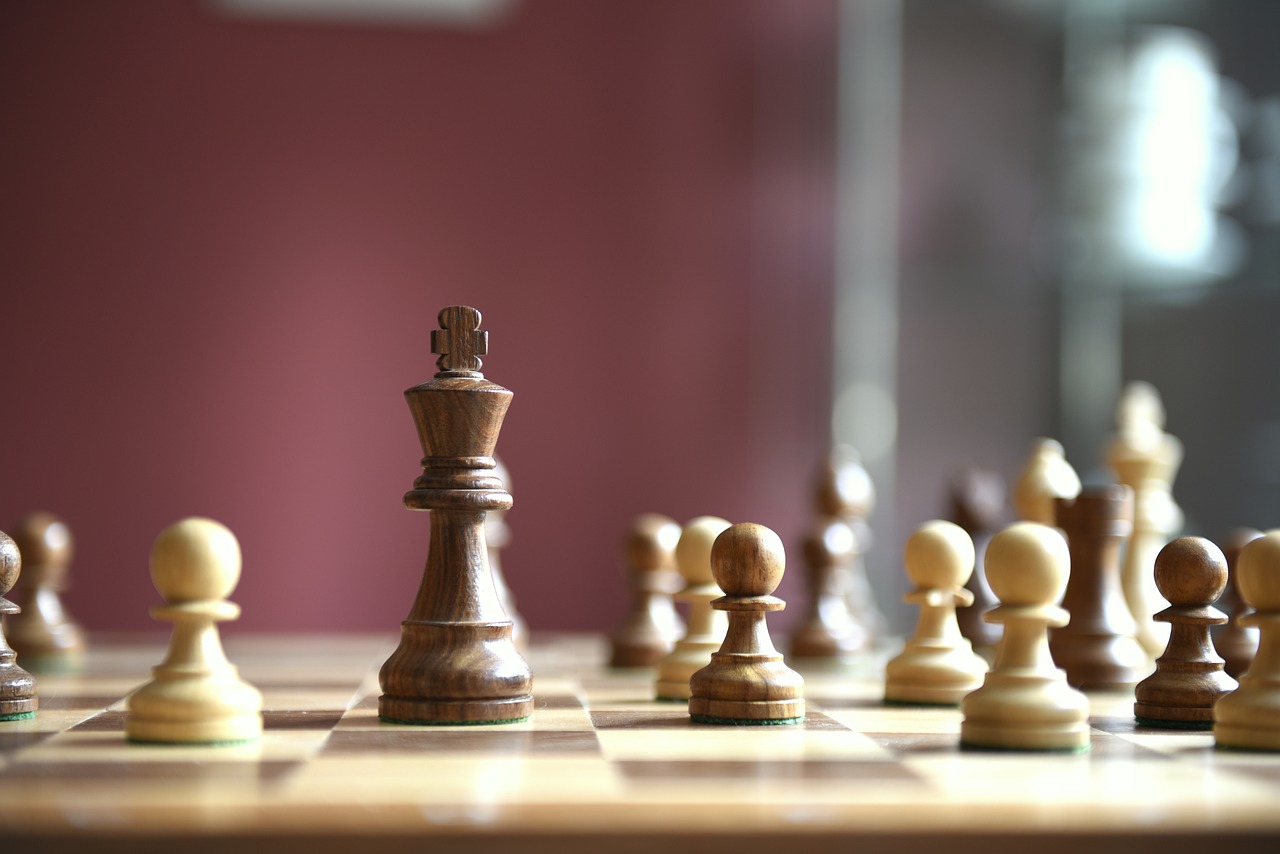
Choosing the Right Wood
When it comes to carving wooden chess pieces, the choice of wood is not just a matter of preference; it can significantly impact the final outcome of your creations. Different types of wood offer unique characteristics that affect everything from aesthetic appeal to durability and ease of carving. Imagine trying to sculpt a masterpiece from a material that splinters easily or lacks the rich grain patterns that make your pieces truly stand out. To avoid such pitfalls, it’s crucial to understand the qualities of various woods before you start your project.
Generally, there are a few key factors to consider when selecting the right wood:
- Grain and Color: The natural grain patterns and color of the wood will influence the final look of your chess pieces. For instance, woods like maple and walnut provide a beautiful contrast when used together, perfect for traditional chess sets.
- Density: Denser woods, such as ebony or rosewood, are not only durable but also allow for finer details in carving. However, they can be more challenging to work with, requiring sharper tools and more effort.
- Workability: Some woods are easier to carve than others. Softer woods like basswood are excellent for beginners as they allow for easier manipulation and quicker results.
To give you a clearer picture, here’s a table that summarizes some popular woods used in chess piece carving:
| Wood Type | Grain Pattern | Density (g/cm³) | Ease of Carving |
|---|---|---|---|
| Maple | Fine, uniform | 0.63 | Easy |
| Walnut | Dark, rich | 0.65 | Moderate |
| Ebony | Very dark, straight | 1.10 | Difficult |
| Basswood | Light, straight | 0.40 | Very Easy |
| Rosewood | Varied, rich | 0.85 | Moderate |
As you can see from the table, each type of wood has its own unique set of characteristics. Choosing the right wood is akin to picking the right canvas for a painting; it sets the tone for your entire project. If you’re just starting, basswood is a fantastic choice due to its ease of carving and smooth finish. On the other hand, if you’re looking to create a stunning, heirloom-quality chess set, investing time and effort into working with ebony or rosewood can yield breathtaking results.
Ultimately, the wood you choose should resonate with your personal style and the type of chess pieces you envision creating. Don’t hesitate to experiment with different woods; you might just find that perfect match that elevates your work to new heights. Remember, the journey of carving is just as important as the finished piece, so enjoy the process of discovering what works best for you!
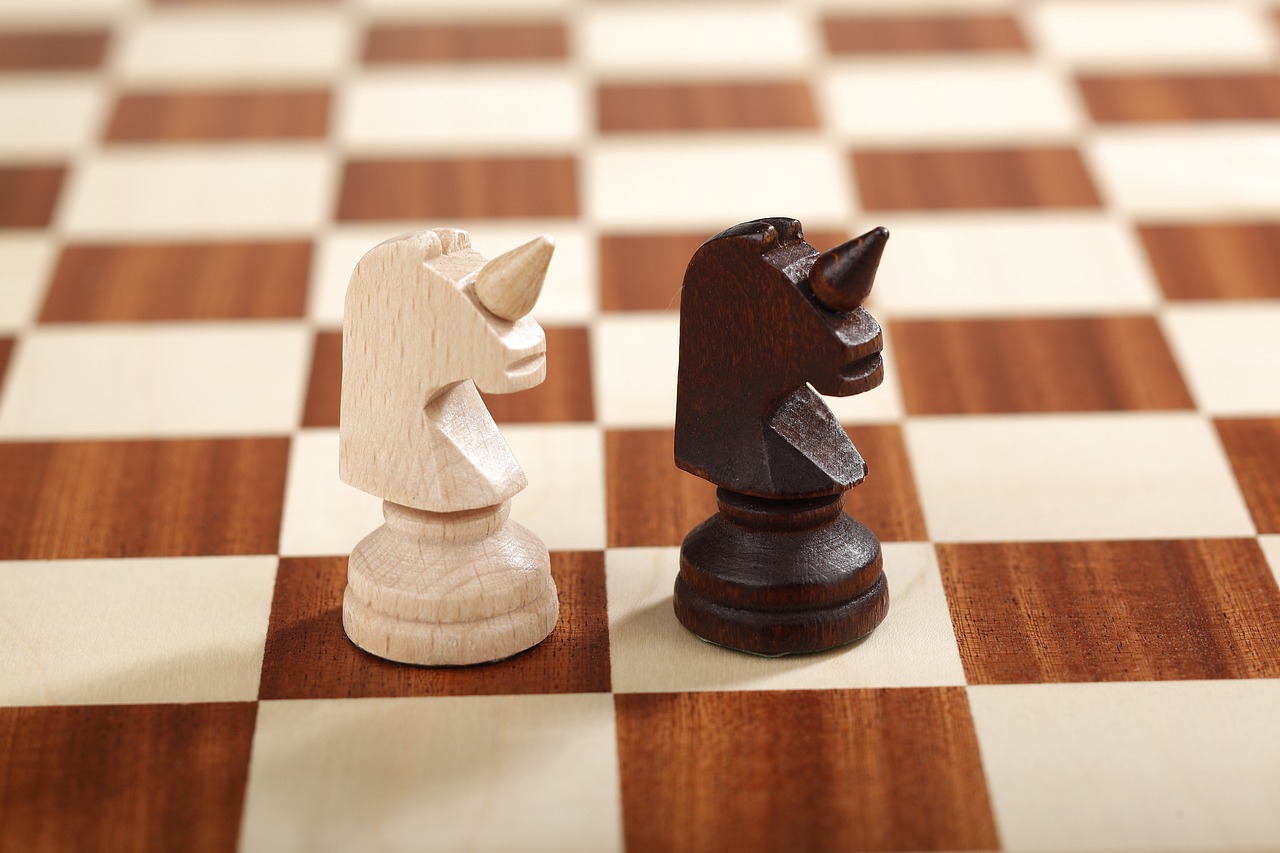
Essential Tools for Carving
When diving into the world of carving wooden chess pieces, having the right tools is like having a well-tuned instrument for a musician. The tools you choose can significantly influence not just the quality of your work, but also the enjoyment you derive from the process. Whether you're a beginner just starting out or a seasoned artisan looking to refine your skills, understanding the essential tools for carving is crucial. Let's explore the must-have tools that will set you up for success in your carving journey.
First and foremost, you'll need a selection of knives and gouges. These are your primary instruments for shaping wood. Knives are typically used for detailed work, allowing you to carve fine lines and intricate designs. Gouges, on the other hand, come in various shapes and sizes, making them perfect for hollowing out areas and adding depth to your pieces. A good set of tools will include:
- Detail Knife: Ideal for precision work.
- Carving Knife: Great for general shaping.
- Gouges: Available in different sweeps for various effects.
In addition to these, a whittling knife can be incredibly useful for larger cuts and roughing out the basic shapes of your chess pieces. The versatility of these tools allows for a range of techniques that can elevate your carving from basic to extraordinary.
Another essential aspect of your carving toolkit is the sharpening equipment. Keeping your tools sharp is non-negotiable; dull tools can lead to frustration and uneven cuts. A good sharpening stone or a set of sharpening files will help maintain the edge of your knives and gouges, ensuring they perform at their best. Remember, a sharp tool is a safe tool, as it requires less force to cut through wood, reducing the risk of slips and accidents.
Now, let's not forget about tool maintenance. Regularly cleaning your tools after use will not only prolong their lifespan but also enhance your carving experience. A simple cloth to wipe off any wood shavings and a bit of mineral oil can go a long way in keeping your tools in top shape. Proper care can prevent rust and damage, allowing you to focus on what you love—creating beautiful wooden chess pieces.
Lastly, consider investing in a workbench or a sturdy table. A dedicated workspace will not only help you stay organized but also provide a stable surface for your carving. This is where you can let your creativity flow, surrounded by your tools and materials. Having a designated area for your projects can also help you stay motivated and inspired.
In summary, equipping yourself with the right tools is the foundation of successful carving. By selecting a quality set of knives and gouges, maintaining them properly, and ensuring you have a comfortable workspace, you'll be well on your way to creating stunning wooden chess pieces. Remember, the journey of carving is just as rewarding as the final product, so take your time, enjoy the process, and let your creativity shine!
Q: What type of wood is best for beginners?
A: Basswood is often recommended for beginners due to its softness and ease of carving.
Q: How often should I sharpen my tools?
A: It's best to sharpen your tools regularly, especially if you notice them becoming dull during your work.
Q: Can I use power tools for carving?
A: Yes, power tools can speed up the process, but they require different techniques and safety precautions compared to hand tools.

Knives and Gouges
When it comes to the art of carving wooden chess pieces, are your best friends. These tools are essential for achieving the intricate details and smooth finishes that make your chess pieces truly stand out. But with so many options available, how do you choose the right ones for your project? Let’s dive into the world of carving tools to help you make informed decisions.
First off, let’s talk about knives. A good carving knife is typically characterized by its sharpness and precision. The blade should be thin enough to allow for delicate cuts, yet sturdy enough to withstand the pressure of carving. For beginners, a basic whittling knife can be a great starting point. It’s versatile and can handle a variety of tasks, from rough shaping to fine detailing. As you progress, you might want to explore more specialized knives, such as a detail knife for those tight corners or a hook knife for creating concave shapes.
On the other hand, gouges are designed to scoop out wood, making them perfect for creating depth and texture in your chess pieces. They come in various sizes and shapes, allowing you to achieve different effects. For instance, a V-gouge is excellent for carving fine lines, while a U-gouge can be used for broader cuts. When selecting gouges, consider the sweep of the blade, which indicates the curvature. A higher sweep number typically means a tighter curve, giving you more flexibility in your designs.
To help you understand the differences better, here’s a quick comparison of some common knives and gouges:
| Tool Type | Purpose | Best For |
|---|---|---|
| Whittling Knife | General carving | Beginners and rough shaping |
| Detail Knife | Fine detailing | Intricate designs |
| Hook Knife | Concave cuts | Bowls and rounded shapes |
| V-Gouge | Fine lines | Texturing and detailing |
| U-Gouge | Broader cuts | Creating depth and contours |
Now that you have an idea of the tools available, it’s important to consider how you’ll maintain them. A sharp knife or gouge is a happy tool! Regularly honing your blades will not only make your carving easier but also safer. Dull tools can slip and cause accidents, which is the last thing you want while working on your beautiful chess pieces.
In addition to sharpening, keeping your tools clean is crucial. Wood shavings and debris can accumulate and affect performance. A simple wipe with a cloth after each use can keep your tools in top condition. Remember, a well-cared-for tool is a tool that will last, allowing you to create stunning chess pieces for years to come.
Q: What is the best type of wood for beginners to carve chess pieces?
A: Basswood is often recommended for beginners due to its softness and ease of carving. It allows for detailed designs without requiring excessive force.
Q: How do I know which gouge to use for my project?
A: The choice of gouge largely depends on the design you want to achieve. For detailed work, opt for a V-gouge, while broader cuts can be accomplished with a U-gouge.
Q: How often should I sharpen my carving tools?
A: It’s best to sharpen your tools regularly, ideally after every significant carving session or whenever you notice a decrease in performance.
Q: Can I use regular kitchen knives for carving?
A: While you can use kitchen knives in a pinch, they are not designed for carving and can lead to poor results and safety hazards. Investing in proper carving tools is highly recommended.
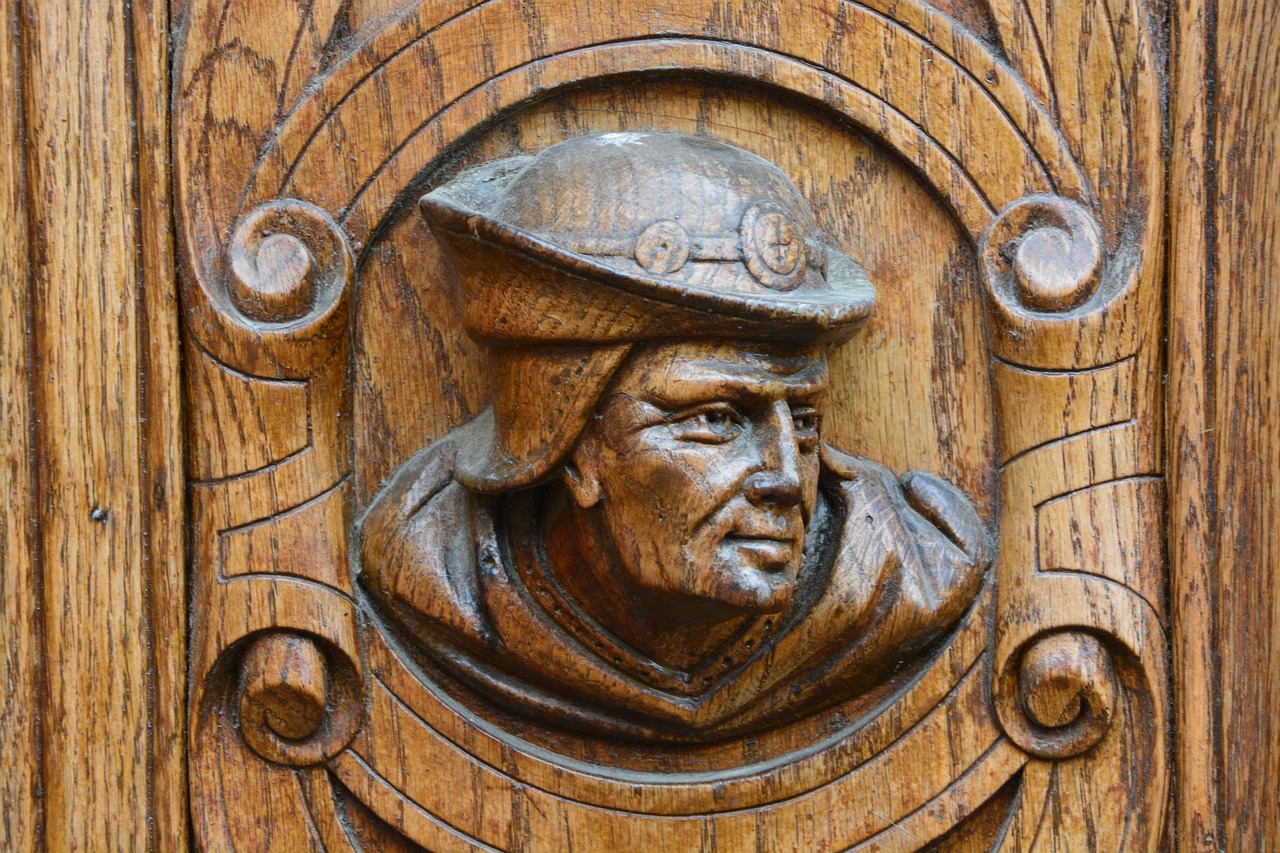
Sharpening Techniques
When it comes to carving wooden chess pieces, the importance of sharp tools cannot be overstated. A well-sharpened knife or gouge can make the difference between a frustrating experience and a smooth, enjoyable carving session. So, how do you keep your tools in tip-top shape? Let's dive into some effective sharpening techniques that will not only enhance your carving precision but also prolong the life of your tools.
First off, it's essential to understand the basic tools used for sharpening. A whetstone is a classic choice, and it's often favored by many artisans for its ability to provide a fine edge. You can find whetstones in various grits, from coarse to fine. For initial sharpening, a coarse grit is perfect for shaping the edge, while a fine grit will give you that razor-sharp finish. Another popular option is the diamond sharpening plate, which is incredibly durable and can sharpen tools quickly.
Here’s a simple step-by-step guide on how to sharpen your carving tools effectively:
- Clean Your Tool: Before sharpening, ensure your tool is free from any wood residue or grime. A clean surface allows for better sharpening.
- Choose the Right Angle: Most carving tools require a sharpening angle between 20 to 30 degrees. Keeping this angle consistent is crucial for achieving a sharp edge.
- Sharpening Motion: Use a smooth, even stroke along the stone, moving from the heel to the tip of the blade. Repeat this motion on both sides of the tool.
- Check the Edge: After a few strokes, check the edge for sharpness. You can do this by carefully running your finger along the edge (but be cautious!).
- Finish with a Strop: Once you have a sharp edge, use a leather strop to polish the blade and remove any burrs. This step is vital for achieving that ultimate sharpness.
Additionally, maintaining a consistent sharpening schedule is essential. Depending on how often you carve, you might need to sharpen your tools after every few sessions. Regular maintenance not only keeps your tools sharp but also saves you time in the long run, allowing you to focus more on your creative process rather than struggling with dull blades.
Finally, let’s not forget about safety. Always be cautious when handling sharp tools, and ensure you’re using a stable surface to avoid any accidents. With these sharpening techniques under your belt, you’ll be well on your way to mastering the art of carving wooden chess pieces with precision and ease.
Q: How often should I sharpen my carving tools?
A: It depends on usage, but a good rule of thumb is to sharpen them after every few carving sessions or whenever you notice a decrease in cutting efficiency.
Q: Can I use a regular kitchen knife sharpener for my carving tools?
A: While some kitchen sharpeners may work, it's best to use tools specifically designed for woodworking, like whetstones or diamond plates, to maintain the correct angle and edge.
Q: What is the best angle for sharpening carving tools?
A: Most carving tools perform well at an angle between 20 to 30 degrees. Maintaining this angle is crucial for achieving a sharp and effective edge.
Q: Is it necessary to use a strop after sharpening?
A: Yes! Using a strop helps to polish the blade and remove any small burrs, resulting in a much sharper and cleaner edge.
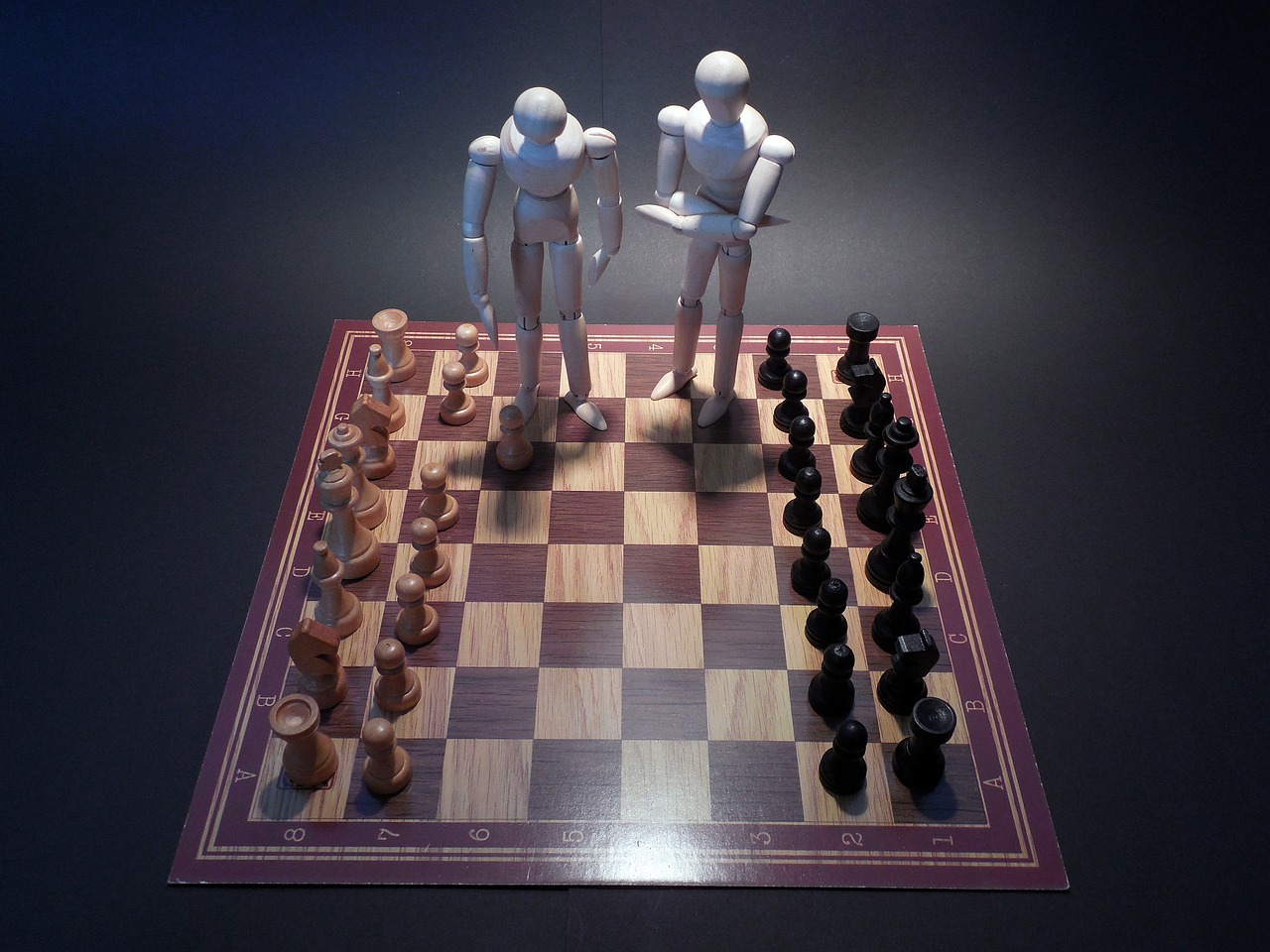
Tool Maintenance
Maintaining your carving tools is not just a chore; it’s a vital part of the woodworking journey that can significantly enhance your carving experience. Just like a chef wouldn’t use a dull knife to prepare a meal, you shouldn’t attempt to carve without ensuring your tools are in top-notch condition. Regular maintenance extends the lifespan of your tools, ensuring they perform optimally and deliver the clean cuts you desire. So, how do you keep those tools in prime shape?
First and foremost, always clean your tools after each use. A simple wipe down with a cloth can remove wood shavings and moisture that, if left unattended, can lead to rust and deterioration. For stubborn residue, consider using a mild solvent. After cleaning, it’s a good practice to apply a thin layer of oil, such as mineral oil, to prevent rust and keep the metal components lubricated. Think of it as giving your tools a refreshing spa treatment!
Next, sharpening your tools is crucial. Dull tools can lead to frustration and poor results, which can be disheartening for any carving enthusiast. Invest in a quality sharpening stone or a honing guide. When sharpening, maintain a consistent angle to ensure a uniform edge. Remember, it's not just about getting the edge sharp; it’s about keeping it sharp through regular maintenance. A well-sharpened tool feels like an extension of your hand, gliding through wood effortlessly.
Additionally, don’t overlook the importance of storing your tools properly. A dedicated toolbox or a tool roll can protect your carving instruments from damage and keep them organized. Consider using dividers or foam inserts to prevent tools from clanging together, which can dull the edges or cause nicks. Just like you wouldn’t toss your favorite shoes into a pile, treat your tools with the respect they deserve.
Lastly, regularly inspect your tools for any signs of wear or damage. Look for cracks in the handles, chips in the blades, or rust spots. Addressing these issues early can save you from bigger problems down the line. If a tool is beyond repair, it might be time to replace it rather than risk injury or poor performance. Remember, your tools are your partners in this creative endeavor, and caring for them is just as important as honing your carving skills.
- How often should I sharpen my carving tools? - It depends on usage, but generally, you should sharpen them after every few hours of carving or whenever you notice a decrease in performance.
- What is the best oil for maintaining carving tools? - Mineral oil is a popular choice, but any light machine oil can work as well to prevent rust.
- Can I use a power tool for carving? - Yes, power tools can speed up the process, but they require a different set of skills and safety precautions.
- How do I know when to replace a carving tool? - If a tool has significant damage, such as a cracked handle or a blade that cannot be sharpened, it’s time for a replacement.
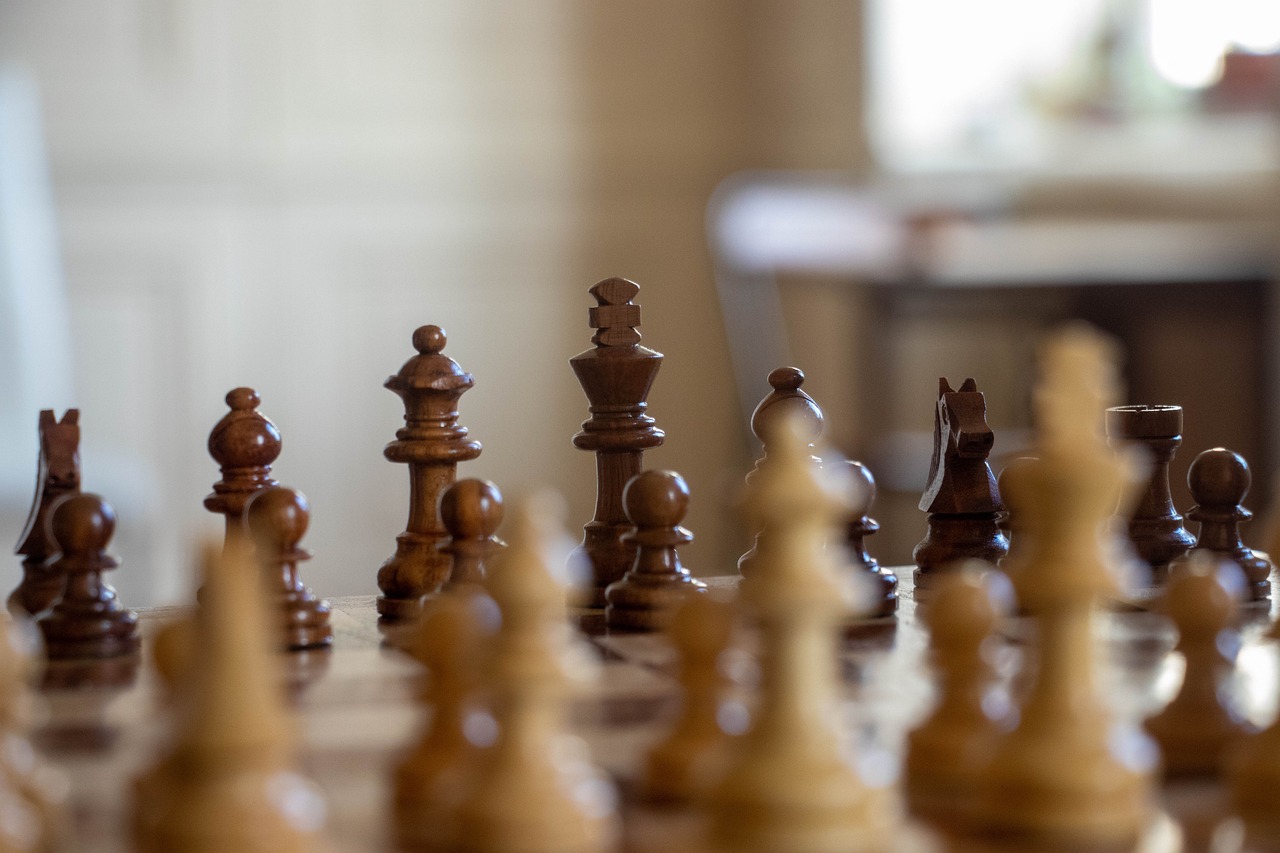
Carving Techniques
When it comes to carving wooden chess pieces, mastering a variety of is essential for bringing your artistic vision to life. Each technique can dramatically influence the final look and feel of your pieces, transforming a simple block of wood into a stunning work of art. Whether you're a beginner or an experienced artisan, understanding these techniques will enhance your skills and allow for greater creativity in your designs.
One of the most fundamental techniques is whittling, which involves using a knife to shave away thin layers of wood. This technique is perfect for creating smooth surfaces and intricate details, making it ideal for the delicate features of chess pieces. As you whittle, remember to keep your knife at a consistent angle to achieve clean cuts. Whittling can be both relaxing and rewarding, as you watch your piece take shape with each careful slice.
Another essential technique is chip carving, where small chips of wood are removed from the surface to create decorative patterns. This method is particularly popular for adding unique designs to the bases or sides of chess pieces. Chip carving requires precision and control, so it's advisable to practice on scrap wood before attempting it on your final piece. The beauty of chip carving lies in its ability to transform a plain surface into a visually striking element.
Relief carving is yet another captivating technique that adds depth and dimension to your chess pieces. In this method, you carve away the background of the wood, leaving the design raised above the surface. This technique is perfect for creating elaborate scenes or figures on your chess pieces, making them not only functional but also decorative. To achieve a successful relief carving, it's crucial to plan your design carefully and work methodically, gradually removing material until you reach your desired depth.
For those looking to push their creative boundaries, power carving offers a modern twist on traditional techniques. Using rotary tools and specialized bits, you can achieve intricate designs and textures that would be difficult to replicate by hand. Power carving allows for greater speed and efficiency, making it a favorite among many contemporary artisans. However, it's important to practice safe handling of these tools, as they can be quite powerful.
Regardless of the technique you choose, the key to success lies in practice and experimentation. Don't be afraid to mix techniques or develop your own unique style. Each piece you carve is an opportunity to learn and grow as an artist. As you gain confidence, you'll find that your creativity flourishes, allowing you to produce chess pieces that are not only functional but also a reflection of your personal artistic expression.
- What type of wood is best for carving chess pieces? Generally, hardwoods like maple, walnut, and cherry are preferred due to their durability and fine grain.
- How do I know which carving technique to use? It depends on your design and the level of detail you want to achieve. Experimenting with different techniques can help you find what works best for you.
- Can I use power tools for carving? Yes, power tools can be very effective for certain techniques, but it's important to practice safe handling and control.
- What finishing techniques should I use after carving? Sanding, staining, and sealing are commonly used to enhance the appearance and durability of your carved pieces.
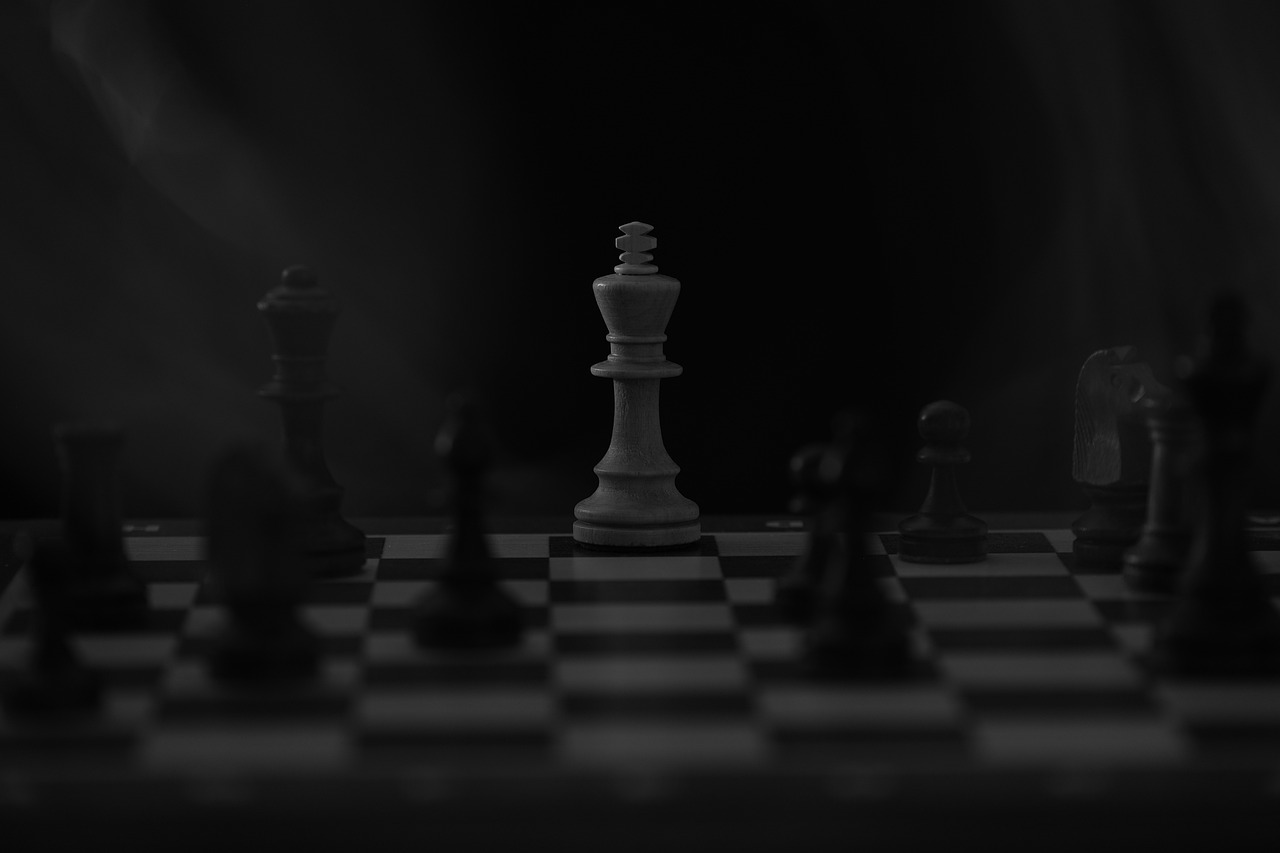
Design Inspiration
Finding the right inspiration for your wooden chess pieces can sometimes feel like searching for a needle in a haystack. You want your creations to stand out, to tell a story, and to capture the essence of the game itself. Luckily, there are countless sources of inspiration out there, waiting for you to discover them. Whether you're a seasoned artisan or a beginner just starting out, tapping into different styles and themes can breathe life into your chess pieces.
One of the most fruitful avenues for inspiration is exploring historical designs. Chess has a rich history, with various cultures putting their unique spin on the game. For instance, the traditional Staunton design, which is commonly used in tournaments, is known for its simplicity and elegance. This design features pieces that are easy to distinguish and beautifully proportioned. By studying such classic styles, you can gain insights into proportions, shapes, and details that can enhance your own designs. You might even consider creating a modern twist on these historical designs, blending old-world charm with contemporary aesthetics.
On the flip side, modern interpretations can also spark your creativity. The world of art and design is ever-evolving, and chess pieces are no exception. Today, many artisans are experimenting with unconventional materials and forms, pushing the boundaries of what a chess piece can be. Think about incorporating elements from modern art movements, such as minimalism or abstract expressionism, into your work. This could mean using bold colors, unusual shapes, or even mixed media. By doing so, you can create pieces that not only serve as game components but also as striking art objects.
To further assist your creative journey, consider these additional sources of inspiration:
- Nature: The organic shapes and textures found in nature can inspire unique designs.
- Architecture: The lines and forms of architectural structures can lead to innovative piece designs.
- Cultural Symbols: Incorporating symbols from different cultures can add depth and meaning to your chess pieces.
Additionally, don't underestimate the power of online resources. Websites like Pinterest or Instagram are treasure troves of visual inspiration. You can find endless images of carved chess pieces, both traditional and modern, that can ignite your imagination. Joining online forums or communities dedicated to woodworking and carving can also provide a platform to share ideas and receive feedback from fellow enthusiasts. This collaborative spirit can lead to unexpected insights and new design directions.
Ultimately, the key to finding inspiration is to keep an open mind and allow your creativity to flow. Don't be afraid to mix and match different styles or to draw from various influences. Each chess piece you carve is an opportunity to express your individuality and craftsmanship. So, whether you decide to stick to historical designs or venture into modern interpretations, remember that the journey of creation is just as important as the final product. Embrace the process, and let your passion for carving shine through in every piece you create!
Q1: Where can I find inspiration for my chess piece designs?
A1: Inspiration can be found in various places, including historical designs, modern interpretations, nature, architecture, and cultural symbols. Online platforms like Pinterest and Instagram are also great for visual ideas.
Q2: How can I incorporate modern aesthetics into my chess pieces?
A2: You can experiment with bold colors, unconventional shapes, and mixed media to create contemporary designs that appeal to a broader audience.
Q3: Are there specific styles I should focus on when designing chess pieces?
A3: While focusing on traditional styles like the Staunton design is a great start, don't hesitate to explore modern and abstract designs that reflect your personal taste and creativity.
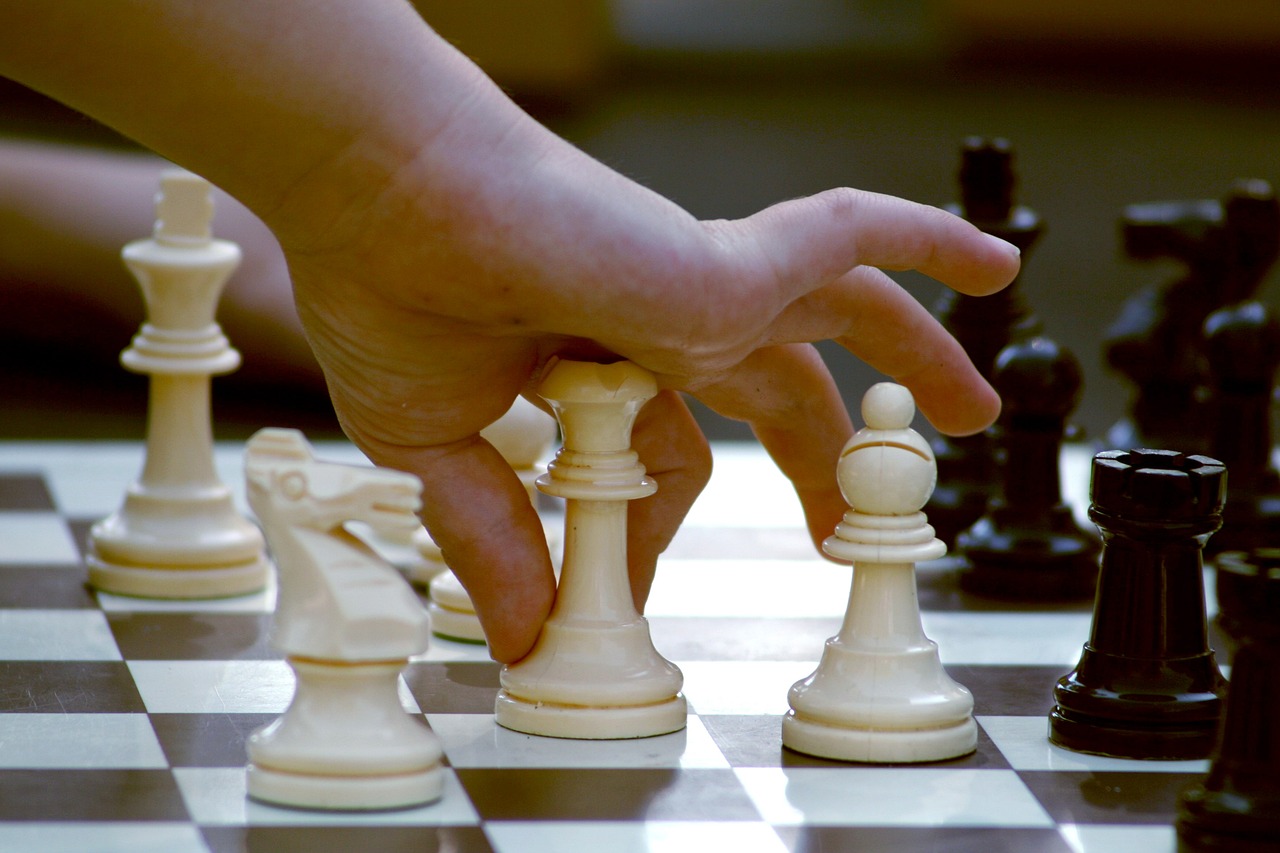
Historical Designs
When it comes to carving wooden chess pieces, exploring can be a treasure trove of inspiration. Chess has a rich history that spans centuries, and the designs of chess pieces have evolved significantly over time, reflecting the cultures and artistic movements of their respective eras. From the ornate styles of the Middle Ages to the sleek forms of the Modern Era, each design tells a story that can ignite your creativity as a carver.
One of the most famous historical designs is the Staunton style, created in the 19th century by Howard Staunton, a prominent English chess player. This design established a standard that is still used in tournament play today. The pieces are characterized by their simplicity and elegance, making them not only beautiful but also functional for competitive play. The Staunton pieces include recognizable shapes like the king, queen, bishop, knight, rook, and pawn, each with distinct features that make them easily identifiable.
Another fascinating historical design comes from the Isle of Lewis, a group of chess pieces discovered on the Isle of Lewis in Scotland. Dating back to the 12th century, these pieces are made from walrus ivory and exhibit intricate carvings that reflect Norse and Celtic influences. The figures are larger than typical chess pieces and are adorned with elaborate details, showcasing the skill of the artisans who crafted them. They provide a glimpse into the past, revealing how chess was not just a game but also a form of artistic expression.
In addition to these iconic styles, many cultures have their own unique interpretations of chess pieces. For example, in India, the game of Chaturanga, which is considered a precursor to modern chess, features pieces that represent military units such as infantry, cavalry, elephants, and chariots. The designs are often vibrant and reflect the rich cultural heritage of the region.
To further illustrate the diversity of historical chess designs, consider the following table that highlights some notable styles and their characteristics:
| Design Name | Origin | Characteristics |
|---|---|---|
| Staunton | England, 19th Century | Simple, functional, easily recognizable |
| Isle of Lewis | Scotland, 12th Century | Intricate carvings, larger pieces, Norse influence |
| Chaturanga | India, Ancient | Representations of military units, vibrant designs |
As you delve into the world of historical chess designs, you may find that the stories behind these pieces can inspire your own creations. Whether you choose to replicate a traditional style or infuse your own artistic flair, understanding the history of chess pieces can enhance your carving journey. The beauty of carving chess pieces lies not only in the final product but also in the rich tapestry of history that each piece embodies.
So, the next time you sit down to carve, think about the legacy of those who came before you. Their designs, steeped in history and culture, can serve as a powerful muse, guiding your hands as you create pieces that will, in turn, tell their own stories for generations to come.
- What wood is best for carving chess pieces? Hardwoods such as maple, walnut, and cherry are popular choices due to their durability and fine grain.
- How long does it take to carve a set of chess pieces? The time can vary greatly depending on the complexity of the design and the skill level of the carver, ranging from a few days to several weeks.
- Can I use power tools for carving chess pieces? While traditional hand tools provide more control for intricate designs, power tools can speed up the process for rough shaping.

Modern Interpretations
When it comes to carving wooden chess pieces, embracing can breathe new life into this age-old craft. Today, artisans are stepping away from traditional designs and exploring innovative shapes, materials, and themes that resonate with contemporary audiences. Imagine a chess set where the knights resemble sleek, futuristic robots or pawns that echo minimalist Scandinavian design. The possibilities are endless!
One of the most exciting aspects of modern chess piece design is the fusion of styles. Artists are blending classic elements with modern aesthetics, creating unique pieces that tell a story. For instance, you might find a set that combines the regal stature of medieval knights with a clean, modern finish that appeals to today's design sensibilities. This approach not only honors the history of chess but also makes it relevant for a new generation of players.
Additionally, the use of unconventional materials is becoming increasingly popular. While traditional wooden chess pieces are timeless, contemporary artisans are experimenting with materials like acrylic, resin, and even metal. These materials allow for vibrant colors and intricate designs that would be challenging to achieve with wood alone. Imagine a set where the pieces are translucent, casting beautiful shadows on the board—now that's a conversation starter!
Moreover, modern interpretations often incorporate themes and narratives that reflect current cultural trends. For instance, some artisans draw inspiration from popular movies, video games, or even literature, crafting pieces that resonate with fans of those genres. A chess set themed around a beloved fantasy series could feature pieces that resemble iconic characters, making each game an immersive experience. This thematic approach not only enhances the visual appeal but also adds a layer of personal connection for the players.
In terms of design trends, minimalism is a leading force in modern chess piece carving. Simple, clean lines and understated elegance can create a striking visual impact. This style often emphasizes the beauty of the material itself, allowing the natural grain of the wood or the sleek finish of acrylic to shine through. Minimalist designs can appeal to those who appreciate modern aesthetics and want their chess set to reflect a more contemporary lifestyle.
As you explore these modern interpretations, remember that the key is to infuse your personality and creativity into your pieces. Don’t be afraid to break the mold! Whether you choose to incorporate bold colors, unusual shapes, or thematic elements, the goal is to create chess pieces that are not only functional but also serve as works of art. This way, every game becomes a unique experience, and your chess set becomes a centerpiece in your home.
- What materials are best for modern chess pieces?
While wood remains a classic choice, materials like acrylic and resin are gaining popularity for their versatility and vibrant colors. - How can I find inspiration for my chess piece designs?
Look to current trends in art, popular culture, and even nature for fresh ideas. Don't hesitate to blend different styles! - Are modern chess pieces still functional?
Absolutely! Modern interpretations prioritize both aesthetics and functionality, ensuring they can be used in gameplay.
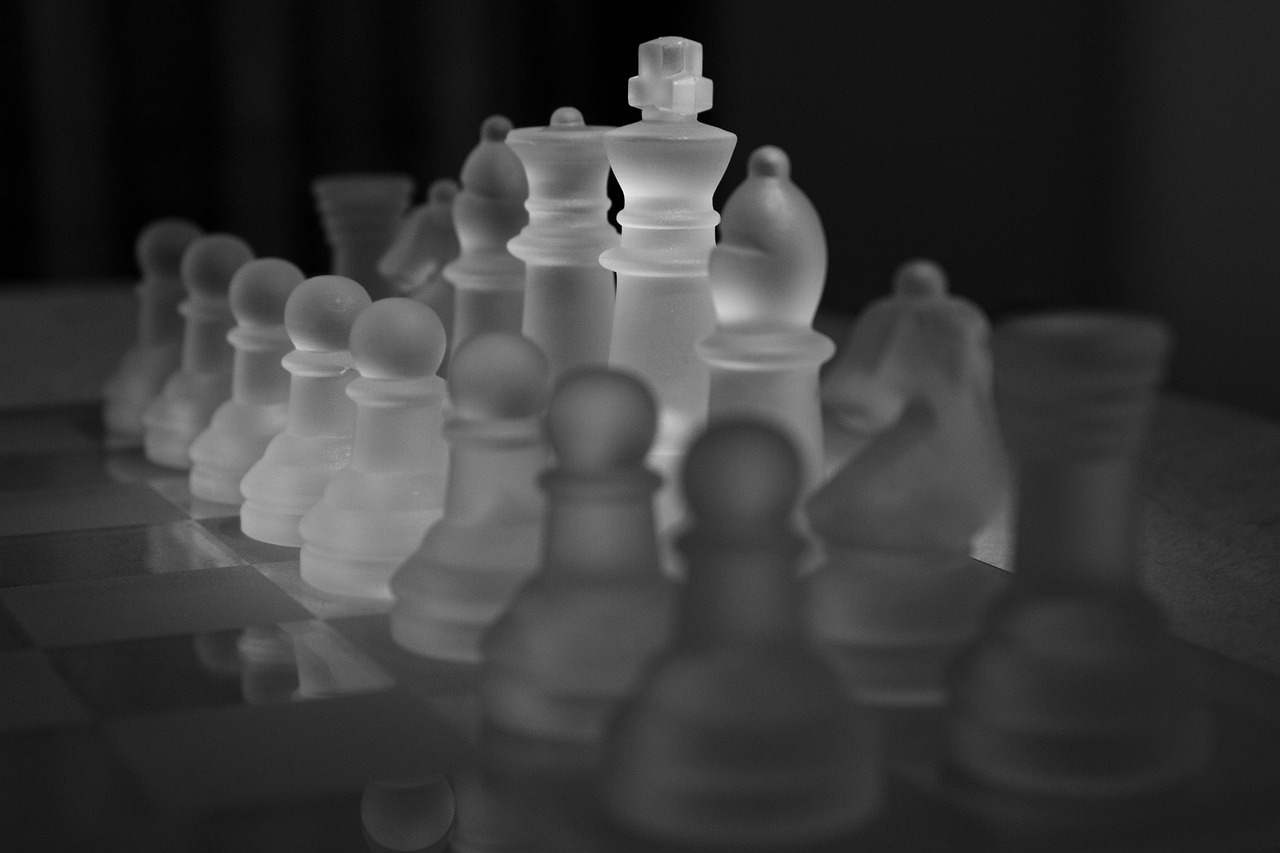
Finishing Touches
When it comes to crafting wooden chess pieces, the can make all the difference between a simple carving and a stunning work of art. Applying the right finishes not only enhances the beauty of your pieces but also ensures their durability for years to come. Think of finishing as the cherry on top of a delicious sundae; it’s what transforms a good piece into a great one. So, let’s dive into the various techniques you can use to achieve that polished look.
First off, sanding is a crucial step in the finishing process. It’s like giving your chess pieces a gentle massage, smoothing out any rough edges and preparing the surface for further treatment. Start with a coarser sandpaper to remove any major imperfections, then gradually move to finer grits for a silky-smooth finish. Remember, the smoother the surface, the better the final finish will adhere. After sanding, it’s essential to clean the pieces thoroughly to remove any dust particles that could mar the finish.
Next up is staining, which allows you to enhance the natural color and grain of the wood. Stains come in various shades, so you can choose one that complements your design. Applying stain is akin to adding a splash of color to a black-and-white photo; it brings out the character of the wood. Use a soft cloth or brush to apply the stain evenly, and don't forget to wipe off any excess to avoid blotchiness. If you desire a more vibrant color, you can apply multiple coats, allowing each layer to dry completely before adding the next.
Sealing your chess pieces is another vital step that protects them from moisture and wear. A good sealant acts like a shield, guarding your artwork against the inevitable bumps and scrapes of regular use. There are several types of sealants to choose from, such as polyurethane, lacquer, or even natural oils. Each has its own set of advantages and drawbacks. For instance, while polyurethane provides a hard, protective layer, natural oils can enhance the wood’s beauty while offering a more organic feel. It’s essential to consider the look and functionality you want when selecting your sealant.
Finally, consider whether you want to go for a painted finish or stick with natural wood tones. Painting can give your chess pieces a modern twist, allowing for vibrant colors and unique designs. However, it’s important to use high-quality paint and apply a primer beforehand to achieve the best results. On the other hand, natural finishes maintain the wood’s original aesthetic, showcasing its unique grain patterns. Each approach has its own merits, so think about the overall style you want to achieve for your chess set.
Protecting your finished chess pieces is essential for their longevity. After all that hard work, you want your creations to last! Using protective coatings can help preserve the beauty of your carvings. Additionally, consider how you store your chess pieces. A well-designed storage solution, such as a padded case or a dedicated chess box, can prevent scratches and damage. Remember, a little care goes a long way in maintaining the integrity of your artistic endeavors.
- What type of wood is best for carving chess pieces? While various woods can be used, popular choices include maple, walnut, and cherry for their workability and aesthetic appeal.
- How can I avoid mistakes while carving? Start with a clear design and take your time. Practice on scrap wood before tackling your final piece to build confidence.
- Is it necessary to use a sealant? Yes, using a sealant is crucial for protecting your pieces from moisture and wear, enhancing their durability.
- Can I mix paint and natural finishes? Absolutely! Many artisans combine both techniques to achieve unique and personalized designs.
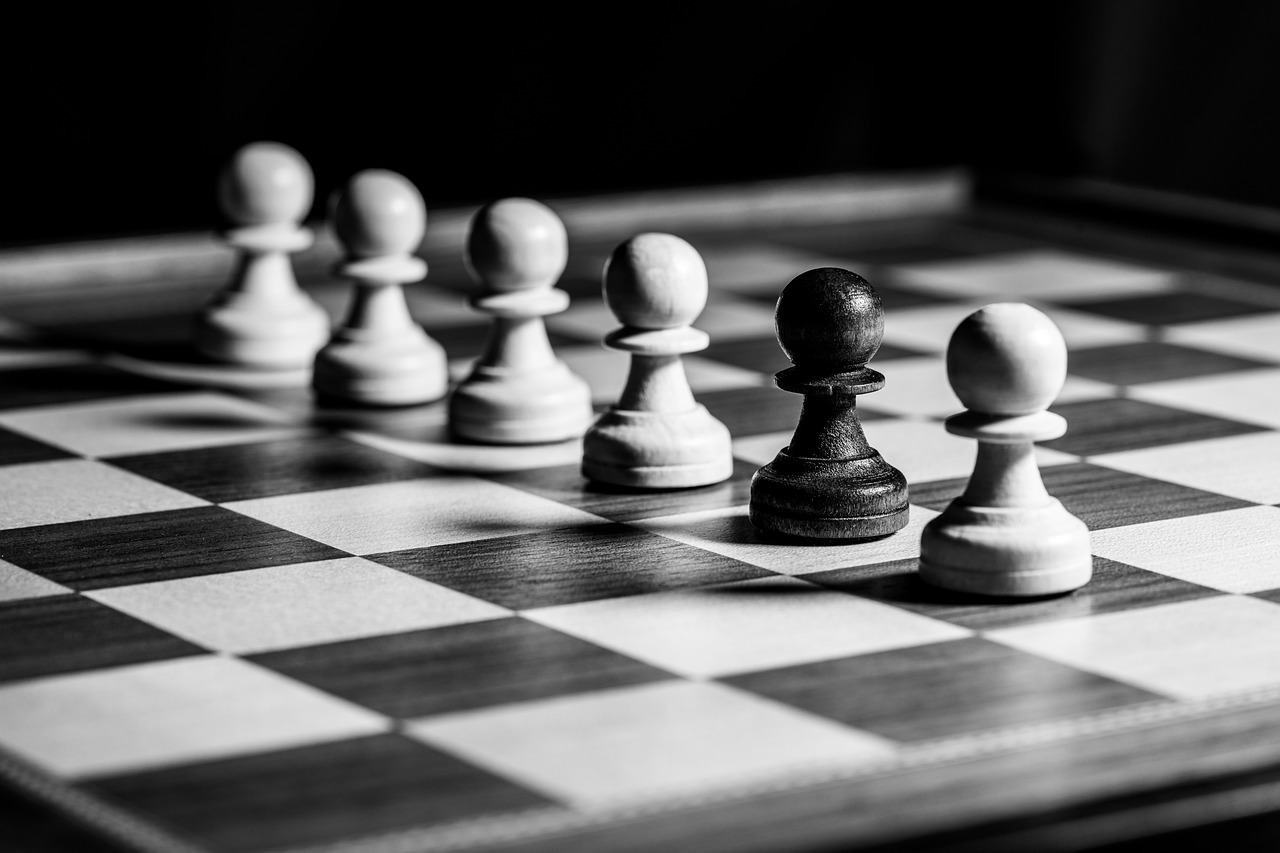
Painting vs. Natural Finishes
When it comes to finishing your carved wooden chess pieces, one of the most significant decisions you'll face is whether to paint them or to use natural finishes. Both options have their unique advantages and can dramatically alter the appearance of your pieces, but they also come with different implications for the overall look and feel of your work. Let's dive into the pros and cons of each approach.
Painting offers a vibrant palette that can bring your chess pieces to life. With paint, you can achieve a wide range of colors and effects, allowing for creative expression that might not be possible with natural finishes. For instance, you might choose to paint your pieces in bold colors or even add intricate designs that reflect your personal style. However, keep in mind that paint can sometimes obscure the natural beauty of the wood grain, which is a hallmark of finely crafted pieces.
On the other hand, natural finishes like oils, waxes, or varnishes enhance the wood's inherent beauty. They allow the grain and texture of the wood to shine through, showcasing the craftsmanship involved in your carving. Natural finishes can provide a warm, organic feel that many enthusiasts appreciate. The downside? They often require more maintenance over time and may not offer the same level of color variety as paint.
To help you decide, consider the following factors:
- Aesthetic Preference: Do you prefer the vibrant colors of paint, or the natural beauty of wood?
- Durability: Painted finishes can chip or wear over time, while natural finishes may require reapplication.
- Maintenance: Natural finishes often need more upkeep, whereas paint can be easier to maintain.
Ultimately, the choice between painting and natural finishes comes down to your personal style and the message you want your chess pieces to convey. Whether you opt for the boldness of paint or the elegance of natural finishes, each choice will tell a different story about your artistry.
1. Can I combine painting and natural finishes?
Yes, many artisans choose to use both techniques. For example, you can paint details on your chess pieces while leaving the main body with a natural finish to highlight the wood’s beauty.
2. How do I care for painted chess pieces?
Painted pieces should be kept away from direct sunlight and moisture to prevent fading and peeling. Regular dusting with a soft cloth can help maintain their appearance.
3. What natural finishes are best for chess pieces?
Some popular natural finishes include tung oil, linseed oil, and beeswax. Each offers different levels of sheen and protection, so choose according to your preference.
4. Will natural finishes change the color of the wood?
Yes, natural finishes can darken the wood slightly and enhance the grain, giving it a richer appearance. Always test on a small area first to see how it reacts.
5. How long do natural finishes last?
The longevity of natural finishes varies based on the type and environmental conditions. Generally, they may need reapplication every few years, especially for pieces that are frequently used.

Protecting Your Pieces
After investing countless hours into carving your wooden chess pieces, the last thing you want is for them to become damaged or worn over time. Protecting your creations is essential not only for preserving their beauty but also for ensuring they remain functional for years to come. There are several strategies you can employ to safeguard your pieces, and understanding these options will help you make informed decisions about their care.
First and foremost, consider the environment in which you store your chess pieces. Exposure to elements such as direct sunlight, humidity, and temperature fluctuations can cause wood to warp or fade. To mitigate these risks, it's best to store your chess set in a cool, dry place away from direct sunlight. A dedicated display case can offer both protection and a beautiful way to showcase your craftsmanship.
Another key aspect of protecting your pieces is applying a suitable protective coating. There are various options available, each with its own set of advantages:
- Varnish: This clear finish provides a durable layer that enhances the wood's natural beauty while offering excellent protection against scratches and moisture.
- Wax: A natural option that adds a soft sheen to your pieces, wax is easy to apply and can be reapplied as needed. However, it may require more frequent maintenance than varnish.
- Oil: Oils like tung or linseed penetrate the wood, providing a rich finish while protecting against moisture. Keep in mind that oil finishes can darken the wood over time.
When applying any finish, ensure you follow the manufacturer's instructions for the best results. Typically, you'll want to sand your pieces lightly before applying the finish to create a smooth surface. After the finish is applied, allow adequate drying time to ensure a solid protective layer forms.
In addition to protective coatings, consider using a soft cloth to clean your pieces regularly. Dust and dirt can accumulate, potentially causing scratches if not addressed. A simple routine of dusting with a microfiber cloth can go a long way in maintaining the appearance of your chess set.
Finally, think about how you handle your pieces during play. Avoid placing them on surfaces that may cause scratches, and consider using a padded chessboard or mat. By treating your pieces with care, you can minimize the risk of damage.
In summary, protecting your wooden chess pieces involves a combination of proper storage, applying suitable finishes, regular cleaning, and careful handling. By implementing these strategies, you can ensure that your beautifully carved chess pieces remain a cherished part of your collection for years to come.
Q: How often should I apply a protective finish to my chess pieces?
A: It depends on the type of finish used. Varnish may last longer than wax, which may require reapplication every few months. Regular inspection will help you determine when a new coat is needed.
Q: Can I use furniture polish on my chess pieces?
A: It's best to avoid commercial furniture polishes, as they can contain chemicals that may damage the wood or finish. Stick to natural cleaning methods, like a damp cloth.
Q: How can I prevent my chess pieces from getting scratched during play?
A: Consider using a padded chessboard or mat to provide a soft surface for your pieces. Additionally, handle them gently and avoid placing them on rough or abrasive surfaces.
Frequently Asked Questions
-
What type of wood is best for carving chess pieces?
Choosing the right wood is essential for your chess pieces. Hardwoods like maple, walnut, and cherry are popular choices due to their durability and fine grain. Each type offers a unique aesthetic and carving experience, so consider your preferences and the final look you want to achieve.
-
What tools do I need to start carving wooden chess pieces?
To get started, you'll need a few essential tools: a whittling knife, various gouges, and a chisel. These will help you create intricate designs. Don't forget to invest in a good sharpening stone to keep your tools in top condition!
-
How do I maintain my carving tools?
Regular maintenance is key! Keep your tools sharp by honing them often, and clean them after each use to prevent rust. Store them in a dry place, and consider applying a light coat of oil to protect the blades.
-
What are some basic carving techniques I should learn?
Start with simple techniques like whittling and relief carving. As you gain confidence, explore more advanced methods such as chip carving and spoon carving. Practice is essential, so take your time and enjoy the process!
-
Where can I find design inspiration for my chess pieces?
Look into historical designs for classic inspiration, or explore modern interpretations for a fresh twist. Websites, books, and even local art galleries can provide a wealth of ideas. Don't be afraid to mix styles and create something truly unique!
-
What finishing techniques should I use for my carved pieces?
Finishing is crucial for enhancing the beauty and durability of your chess pieces. You can choose between painting or applying natural finishes like oils or stains. Each method has its pros and cons, so consider the look you want and the time you have to invest.
-
How can I protect my finished chess pieces?
To keep your carvings in pristine condition, use protective coatings like varnish or polyurethane. Also, store your pieces in a cool, dry place, preferably in a padded case or box to prevent scratches and damage.















